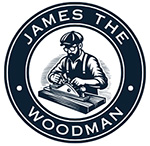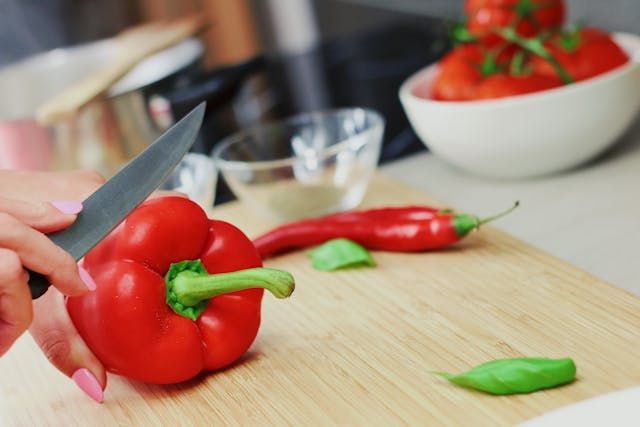Wooden cutting boards have been a staple in kitchens around the world for centuries. Their natural appearance, durability, and gentle effect on knives make them a favorite among home cooks and professional chefs alike. However, while wooden boards offer many advantages, they also require special care to ensure food health and safety. Improper use or maintenance can lead to contamination, cross-contamination, or the growth of harmful bacteria. In this article, we present 7 essential food health and safety tips when using wooden cutting boards, helping you maintain a clean and safe kitchen environment.
1. Choose the Right Type of Wood
Not all wooden cutting boards are created equal. The type of wood plays a significant role in the board’s durability, porosity, and resistance to moisture and bacteria. Dense hardwoods like maple, walnut, cherry, and beech are excellent choices because they are less porous than softwoods like pine or cedar. A less porous surface means there’s a reduced risk of moisture and bacteria seeping into the board.
When selecting a board, look for end-grain or edge-grain construction. End-grain boards are considered superior in both knife preservation and hygiene because they allow the knife to slide between wood fibers rather than across them. This structure also tends to self-heal from minor cuts and scratches, reducing the likelihood of deep grooves where bacteria can hide.
2. Use Separate Boards for Different Food Types
Cross-contamination is one of the leading causes of foodborne illnesses. To avoid this, it’s critical to use separate wooden boards for different categories of food—particularly raw meat, poultry, seafood, and fresh produce or bread.
Even though wooden boards are less likely to harbor bacteria than plastic ones (thanks to their natural antimicrobial properties), they are still not immune. Consider color-coding or labeling your boards. For example, designate one wooden board exclusively for vegetables and another for cooked food or bread. Raw meats are better handled on nonporous materials like plastic, which can be sanitized with harsher chemicals.
3. Clean Immediately and Thoroughly After Each Use
Proper cleaning is essential for wooden cutting board safety. After each use, especially after cutting anything wet or juicy, immediately wash the board with warm, soapy water. Avoid soaking the board or putting it in the dishwasher, as excessive moisture and high heat can warp or crack the wood.
Use a scrub brush or sponge to remove food particles. Rinse thoroughly and dry the board right away with a clean towel. Let the board air dry completely, standing it on its edge or in a well-ventilated rack. Leaving a damp board flat on the counter can trap moisture underneath, encouraging bacteria or mold growth.
4. Disinfect Naturally and Regularly
While soap and water are effective for daily cleaning, wooden boards also need occasional natural disinfection to kill lingering bacteria and eliminate odors. You can disinfect a wooden cutting board using simple, safe household ingredients:
- White vinegar: Wipe the surface with white vinegar or spray it and let sit for a few minutes before rinsing.
- Hydrogen peroxide (3%): Pour it over the board and let it bubble for a few minutes, then rinse and dry.
- Lemon and salt: Sprinkle coarse salt on the board, then scrub with half a lemon. This method also helps deodorize and gently sand the surface.
Avoid using bleach or strong chemical cleaners on wood, as they can penetrate and damage the fibers.
5. Oil Your Board to Prevent Cracking and Moisture Absorption
Wood is a natural material that can dry out, crack, or absorb unwanted moisture if not properly maintained. To preserve your board, regularly treat it with food-grade mineral oil or beeswax. This protective coating helps seal the surface, preventing moisture, bacteria, and food particles from entering the wood.
Apply a generous amount of oil to a clean, dry board using a soft cloth or paper towel. Let the oil soak in for a few hours or overnight, then wipe off any excess. Frequency depends on how often the board is used, but once a month is a good rule of thumb for maintenance.
Avoid using cooking oils like olive or vegetable oil, as they can turn rancid and create unpleasant smells or flavors.
6. Sand Down Deep Grooves and Cuts
Over time, cutting boards develop knife marks and grooves, especially in frequently used areas. These tiny crevices can harbor bacteria and food debris, even after washing. While this is a concern with any cutting board material, it’s especially important with wood because it cannot be sanitized as aggressively as plastic or glass.
To maintain a hygienic surface, sand down your wooden cutting board periodically. Use fine-grit sandpaper to smooth out the surface, then re-oil the board. This simple step refreshes the board’s surface and extends its life.
If your board has deep cracks or is splitting, it may be time to retire it. A compromised board is difficult to clean and may pose a health risk.
7. Store Properly to Prevent Mold and Warping
Proper storage is often overlooked, but it plays a crucial role in maintaining the safety and longevity of your wooden cutting board. Always store your board in a dry, well-ventilated area. If possible, stand it on its edge to allow air circulation around all sides. This helps prevent moisture from becoming trapped, which can lead to mold or mildew growth.
Never store a damp cutting board in a closed cabinet or leave it lying flat on a countertop. Similarly, avoid stacking boards tightly together unless they are completely dry.
For extra protection, consider storing your wooden board in a breathable cotton or linen bag to prevent dust buildup while still allowing airflow.
Check Out James’s Wooden Cutting Boards
Wooden cutting boards are a beautiful and functional addition to any kitchen, but they require mindful care to ensure they remain safe for food preparation. From choosing the right type of wood and keeping foods separate to cleaning, disinfecting, and storing correctly, following these seven food health and safety tips will help you make the most of your wooden board—safely and hygienically.
With regular maintenance and attention, a high-quality wooden cutting board can last for many years, providing both aesthetic charm and reliable performance. More importantly, it can help keep you and your family safe from foodborne illnesses. So next time you chop, slice, or dice, take a moment to show your wooden board some care—it’s an essential partner in your culinary journey.

